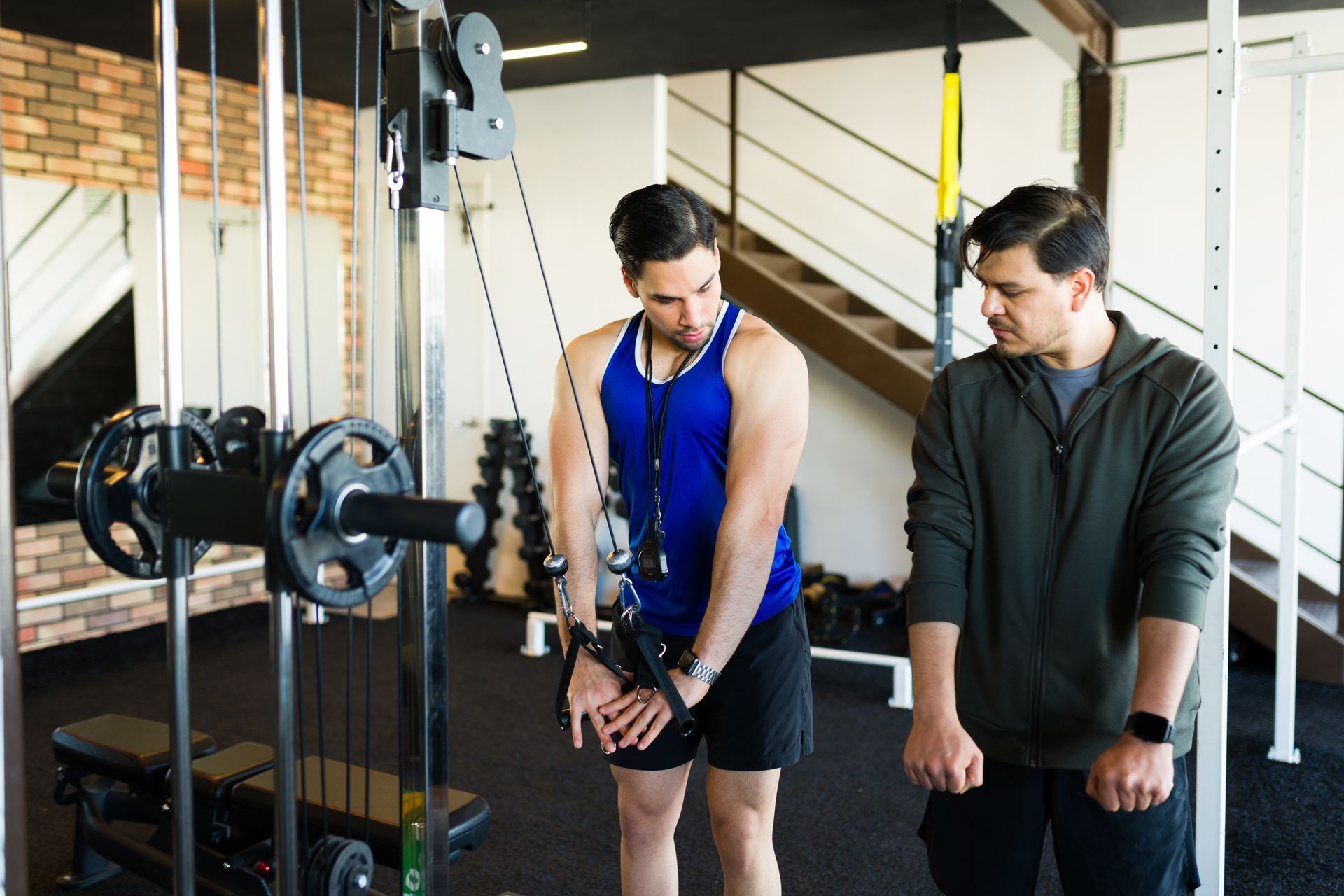September 16, 2024
How to Eat 100 Grams of Protein a Day: Top Meal Strategies from a Nashville Personal Trainer
Meal Strategies to Boost Your Protein Intake
Reaching your protein intake goals can be a simple and enjoyable process with the right approach. For those involved in weight training or looking to build muscle and burn fat, protein needs are higher than the average person. Aiming for around 0.8 grams of protein per pound of body weight per day is generally recommended. For example, someone weighing 150 pounds would need around 120 grams of protein daily. However, many people find it difficult to consistently meet their protein needs.
If hitting your full protein target is challenging, aiming for at least 100 grams of protein per day is a solid starting point. As a Nashville personal trainer, I help clients integrate protein-rich strategies into their routines. Here are some of my top tips to meet your protein needs effectively.
Why Protein is Important
Protein plays a crucial role in health and fitness:
- Muscle Gain: Protein is essential for muscle repair and growth. When you engage in strength training, small tears occur in the muscle fibers. Consuming adequate protein helps repair these tears, leading to increased muscle mass and strength over time.
- Weight Loss: Protein can aid in weight loss by promoting satiety, helping control appetite and reduce overall calorie intake. Additionally, the body uses more energy to digest protein compared to fats or carbohydrates, a process known as the thermic effect of food (TEF), which can slightly boost metabolism.
- Aging: As we age, maintaining muscle mass becomes increasingly important for overall health and mobility. Adequate protein helps prevent sarcopenia (age-related muscle loss) and supports bone health. For older adults, higher protein intake is linked to improved recovery from illness or injury and enhanced overall quality of life.
Start with a Protein-Packed Breakfast
Breakfast is a prime opportunity to kickstart your protein intake. Some excellent options include:
- Greek yogurt: 10 grams of protein per serving.
- Eggs: Approximately 6 grams of protein per egg.
- Protein smoothie: Made with protein powder (20-25 grams), milk (8 grams per cup), and fruits. Adding a tablespoon of chia seeds or nut butter can boost the protein content further.
This combination easily provides 20-30 grams of protein in one meal, helping you get a strong start on your daily goal.
Make Lunch Protein-Centric
For lunch, focus on meals rich in protein to fuel your energy throughout the day. Some protein-packed options include:
- Grilled chicken breast: Approximately 25 grams of protein per serving.
- Tuna salad: A 3-ounce serving of tuna provides about 20 grams of protein.
- Chickpea and quinoa bowl: A cup of cooked quinoa adds 8 grams, while half a cup of chickpeas provides 7 grams of protein.
Pair these with vegetables and healthy fats to create a balanced and nutritious meal that will keep you full and energized.
Snack Smart with Protein
Snacks are another way to increase your protein intake. High-protein snack options include:
- Almonds: 6 grams of protein per ounce.
- Protein bars: Can offer anywhere from 10 to 20 grams of protein.
- Cottage cheese: 14 grams of protein per half-cup serving.
- Jerky or deli meats: Typically 7-10 grams of protein per ounce.
- Hummus with veggies: 2 grams of protein per 2 tablespoons, plus the added protein (although, fairly minor) from the veggies.
Convenient snacks like Greek yogurt or string cheese also provide easy and effective ways to boost your protein intake between meals.
Protein-Rich Dinners
For dinner, aim for a protein-rich main course such as:
- Salmon or lean beef: Around 22-25 grams of protein per serving.
- Tofu: 10 grams of protein per half-cup serving.
- Lentils or beans: Another 8-9 grams of protein per half-cup.
Incorporating a variety of protein sources at dinner not only makes meals more enjoyable but also ensures you're getting a full spectrum of essential amino acids, which are vital for muscle repair and growth.
Consider Protein Supplements
If you're finding it challenging to meet your protein goals through food alone, protein supplements can be a practical addition to your diet:
- Whey or casein protein powders: Typically provide 20-25 grams of protein per scoop.
- Plant-based protein powders: Also a great option, offering around 15-20 grams per scoop.
Supplements are particularly useful post-workout or as a quick protein boost during a busy day. Mix with water, milk, or add to smoothies for a convenient protein source.
Balance and Variety are Key
While focusing on protein, it’s important to maintain a balanced diet:
- Include a variety of protein sources: To ensure you're getting all the essential amino acids your body needs.
- Pair your protein with healthy carbs and fats: Whole grains, fruits, vegetables, nuts, and seeds are essential for overall health and energy.
This balanced approach will support muscle growth, recovery, and overall well-being.
Planning and Preparation
Effective meal planning ensures you meet your protein goals. Preparing meals and snacks in advance can help you stay on track, avoid less nutritious options, and make it easier to hit your protein target daily. Consider:
- Batch cooking: Prepping large quantities of protein-rich meals like grilled chicken, chili, or stir-fries.
- Portioning out meals: Ensuring each meal has the necessary protein content.
- Having ready-to-eat protein snacks on hand: This will simplify your routine and support your dietary goals.
Conclusion
This guide provides strategies to help you get closer to reaching your protein goals, whether you're focusing on muscle growth, fat loss, or overall health. By integrating these strategies into your daily routine, consuming 100 grams of protein a day can become an effortless part of your lifestyle. Whether you're a beginner or seasoned lifter, embracing the variety of protein-rich foods available, from whole foods to supplements, can help you achieve your fitness and health goals.
It’s worth noting that the general recommendation for active individuals involved in resistance training is typically between 0.7 to 1.0 grams of protein per pound of body weight per day. Aiming for around 0.8 grams per pound of body weight is a solid, well-supported middle ground for building muscle and losing fat. For most people, this means they’ll need more than 100 grams of protein per day, especially if they weigh more than 125 pounds.
For personalized guidance on your protein needs and to explore more fitness strategies, consider working with a Nashville personal trainer. Whether you're seeking personal training in Nashville or online coaching, having expert support can make all the difference in achieving your fitness goals.





